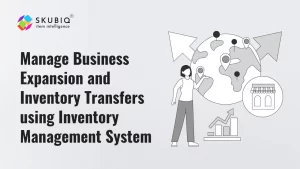In the realm of modern logistics and supply chain management, Warehouse Management Systems (WMS) stand as the backbone of efficient operations. As businesses evolve, so do the demands placed on their WMS systems. To stay competitive in today’s dynamic market landscape, companies must embrace the best practices for revamping WMS systems. This entails not only upgrading software but also reimagining processes to optimize efficiency and productivity.
Understanding the Importance of WMS Systems
Before delving into the best practices for revamping WMS systems, it’s essential to grasp their significance within the broader context of warehouse inventory management systems. A WMS system serves as a centralized platform for managing various aspects of warehouse operations, including inventory control, order fulfillment, and workforce management. By leveraging automation and real-time data, WMS systems streamline processes, minimize errors, and enhance overall operational efficiency.
Signs It's Time for a WMS Revamp
Recognizing when a WMS system needs revamping is crucial for maintaining competitiveness and meeting evolving business needs. Several indicators suggest that it’s time to consider an overhaul:
- Outdated Technology: Legacy WMS systems may lack the features and flexibility required to adapt to changing business requirements.
- Inefficient Processes: Bottlenecks, inaccuracies, and delays in warehouse operations often signal the need for process optimization through a revamped WMS system.
- Scalability Issues: As businesses grow, their warehouse inventory management systems must scale accordingly. A lack of scalability can impede growth and hinder operational performance.
- Poor Integration: Incompatibility with other business systems, such as ERP software, can lead to data silos and inefficiencies.
Best Practices for Revamping WMS Systems
1. Comprehensive Needs Assessment
Before embarking on a WMS system revamp, conduct a thorough assessment of your organization’s requirements, challenges, and goals. Engage stakeholders from various departments to gather insights and ensure alignment with business objectives. This assessment lays the foundation for selecting the most suitable inventory software and designing an optimized solution.
2. Choose the Right Software
Selecting the appropriate WMS system is paramount to the success of the revamping process. Consider factors such as scalability, customization capabilities, integration capabilities, and vendor support. Cloud-based WMS systems are increasingly popular due to their scalability, accessibility, and ease of implementation.
3. Process Optimization
Revamping a WMS system provides an opportunity to streamline and optimize warehouse processes. Identify inefficiencies, redundancies, and bottlenecks in current workflows and leverage the capabilities of the new WMS system to design more efficient processes. Automation, such as barcode scanning and RFID technology, can significantly improve accuracy and efficiency.
4. Training and Change Management
Introducing a new WMS system necessitates proper training and change management to ensure successful adoption by warehouse staff. Provide comprehensive training programs to familiarize employees with the new system and its features. Effective change management strategies, such as communication plans and user support resources, help mitigate resistance to change and promote a smooth transition.
5. Continuous Improvement
Revamping a WMS system is not a one-time endeavor but rather an ongoing process of continuous improvement. Regularly monitor system performance, gather feedback from users, and identify areas for enhancement. Embrace a culture of continuous improvement to adapt to evolving business needs and technological advancements.
Types of Warehouses in Logistics and Their Unique Requirements
In the realm of logistics, warehouses serve diverse functions, each with its unique requirements for warehouse inventory management systems:
- Distribution Centers: Focus on rapid order fulfillment and distribution, requiring WMS systems optimized for speed and efficiency.
- Cold Storage Facilities: Manage perishable goods, necessitating WMS systems with temperature monitoring and expiration date tracking capabilities.
- E-commerce Warehouses: Handle a high volume of small orders, requiring WMS systems with advanced picking and packing features to optimize order fulfillment.
Conclusion
Revamping WMS systems is essential for staying competitive in today’s fast-paced business environment. By following best practices such as conducting comprehensive needs assessments, choosing the right software, optimizing processes, investing in training and change management, and embracing continuous improvement, organizations can unlock the full potential of their warehouse inventory management systems. With the right approach, a revamped WMS system can drive efficiency, accuracy, and agility across warehouse operations, enabling businesses to meet customer demands and seize growth opportunities in the ever-evolving logistics landscape.




